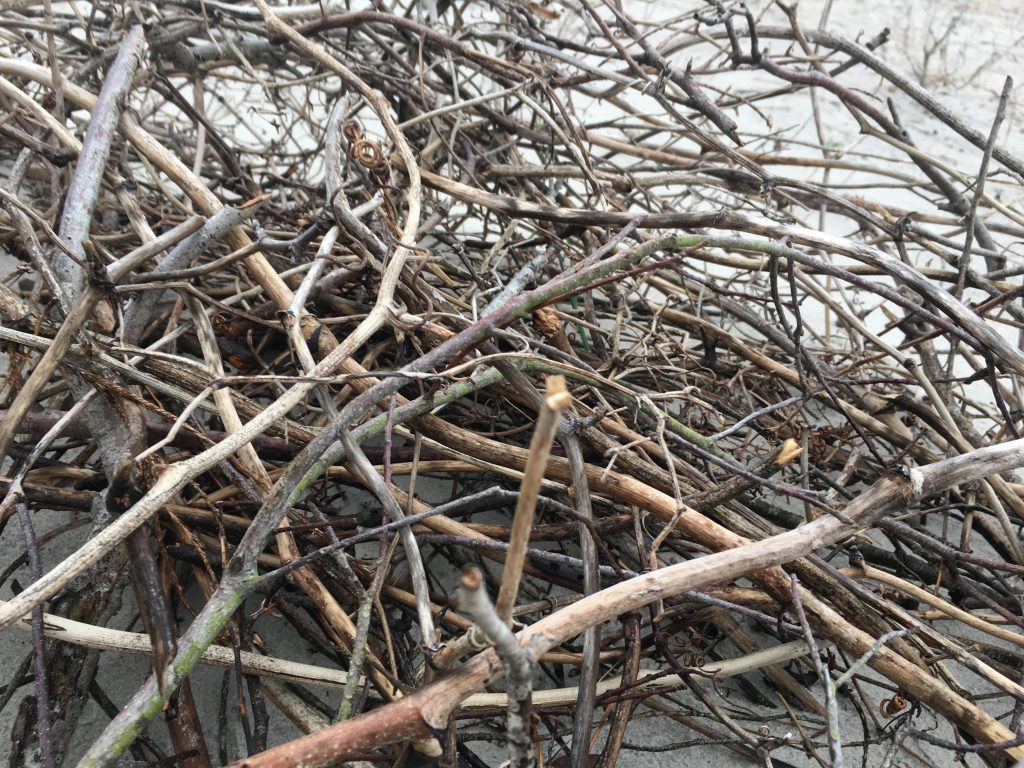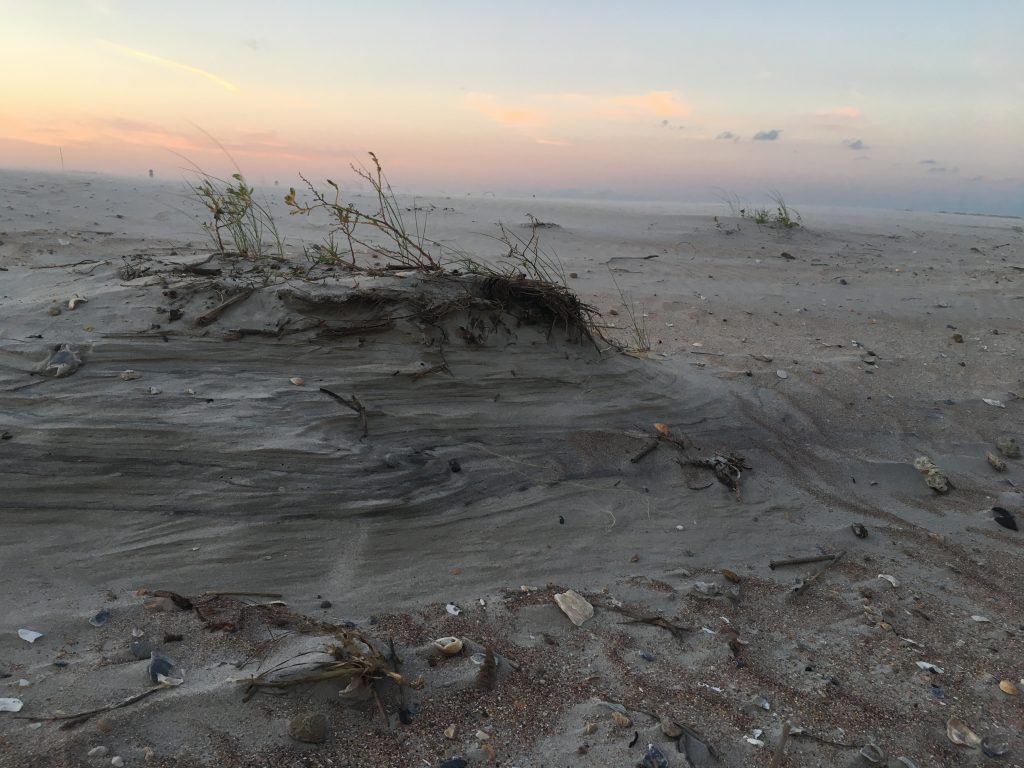Smooth, round disks of leaf nestle in bunches by the shore. Their slight silver tinge abounds across miles of beach, the vines hugging tightly to the sand below. Bumblebees are drawn to their buds, tickle the soft purple petals, emerge with puffy legs dusted in pollen. When split open a smell like licorice and mint leaves caresses the air. By all accounts, Beach Vitex ought to be welcome on North Topsail Beach. But this is merely a tourist’s fantasy; a facade of Summer that is only skin deep.

Of course, tourists have not been the only ones fooled by the appeasing look of Beach Vitex as it rustles unassumingly in the warm, salty breeze. Introduced to the East Coast in the mid to late eighties, the deciduous vine was brought from Asia to be utilized for both aesthetic and environmental purposes. With its rolling branches, pastel colors, delicate flowers, and sweet smelling bark, it was quick to win the hearts of many. So quickly, in fact, that apparently no research was done into the actual nature of the plant.
Thought to be the perfect candidate for limiting erosion, Beach Vitex was considered an alternative to native species, whose root systems have long kept sand from being drawn out to sea or blown halfway across the world. Unfortunately, no mind was paid to the fact that Beach Vitex enters more than a dormant state following the Summer months. During this period, it essentially dies—not only losing its buds and leaves, but its roots as well. Every Winter, they retract, poking out through shallow sand, leaving the deeper levels barren and the area overall vulnerable to erosion.

Were additional root systems to exist in areas where Beach Vitex prevails, this would not be such a devastating issue; however, the species has been found over the years to cause “intense substrate hydrophobicity that persists for several years” following its removal. Essentially this means that the sand surrounding Beach Vitex becomes repellant towards water, thus depleting the area of resources needed to sustain additional plant life. As a result, American Beach Grass withered, Sea Oats withdrew, and all aside from the occasional cluster of Pond Pines was ultimately choked out—paving the way for erosion galore.

As of February 1st, 2009, the Beach Vitex was officially added to the North Carolina Noxious Weed List. Not only can the species no longer be sold or maintained, it is also required by law that all known populations be reported to the official Beach Vitex Task Force. What was once a highly sought after plant, thought to be the answer to all coastal needs, has become a fugitive—breaking the law by merely taking root. Conversely, according to North Carolina state law, it is “unlawful to dig up, pull up, or take from the land of another or from any public domain the whole or any part of any Sea Oats,” without the approval of a special request.

Once thought to be the ugly, itchy, straw colored predecessor to the new age Beach Vitex, Sea Oats are now proclaimed saviors of the land. With their extensive root systems, resistance to drought, and generally robust nature, they implore humans to see beyond artificial conceptions of beauty, and focus instead on deeper levels of understanding.
Sources:
http://www.northinlet.sc.edu/beachvitex/media/Invasion%20alert.pdf
https://brunswick.ces.ncsu.edu/wp-content/uploads/2013/04/Beach-Vitex-Brochure.pdf?fwd=no
The idea of perceived nuisances fundamentally structuring and protecting dune habitats is fascinating. It definitely provokes a closer examination of our assumptions of the natural world.
Why thank you 💗💞💖 I’m fascinated by how beach management teams could allow for such a shallow understanding of a plant to lead to its introduction and infestation of a foreign space.